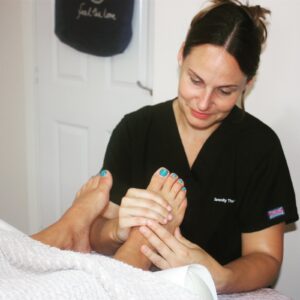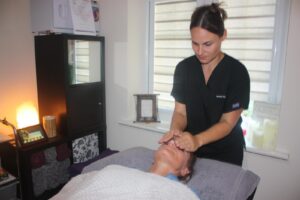Holistic Therapy
 Holistic has become something of a buzzword over time, but its definition is rather simple. Holistic medicine simply refers to the treatment of the whole person.1 Holistic treatment takes into account all aspects of a person’s health – physical, mental, social, etc.
Holistic has become something of a buzzword over time, but its definition is rather simple. Holistic medicine simply refers to the treatment of the whole person.1 Holistic treatment takes into account all aspects of a person’s health – physical, mental, social, etc.
What Is Holistic Therapy?
Holistic therapy is a form of treatment that focuses on recovery in a comprehensive way. Holistic therapy abides by these same principles. A holistic approach to therapy delves into the complex nature of conditions such as addiction, depression, and anxiety, using a variety of approaches that focus on both the mind and body.
 Holistic treatment is a response to what some people see as a more reactionary approach to health – the tendency to treat symptoms only, instead of finding and treating the root cause or addressing a confluence of multiple contributing factors.
Holistic treatment is a response to what some people see as a more reactionary approach to health – the tendency to treat symptoms only, instead of finding and treating the root cause or addressing a confluence of multiple contributing factors.
Many people who have felt like traditional medicine has failed them have turned to holistic medicine in hopes that their practitioners will understand the complex nature of their illness, dig deeper into the source(s) of the issue, and focus their treatment on the whole person, not just the obvious symptoms.
For example, someone with chronic pain might come to a holistic therapist to explore possible psychological sources of their suffering. Stress and anxiety can contribute to chronic pain, and if an emotional issue or past trauma is the source of that stress, dealing with it could alleviate chronic pain to a certain extent.
 It’s important to remember that holistic therapy doesn’t necessarily leave out Western medicine; it can mean the inclusion of complementary techniques. While medication may indeed be part of a person’s treatment, a holistic approach may include other treatments such as cognitive-behavioral therapy to address unresolved issues and triggers, relaxation techniques, massage, and more.
It’s important to remember that holistic therapy doesn’t necessarily leave out Western medicine; it can mean the inclusion of complementary techniques. While medication may indeed be part of a person’s treatment, a holistic approach may include other treatments such as cognitive-behavioral therapy to address unresolved issues and triggers, relaxation techniques, massage, and more.
The acceptance of holistic treatment has been growing. As part of this, complementary and alternative treatments (CAM) are being utilized on an increasing basis. In 2007, 38.3% of adults and 11.8% of children accessed some form of complementary or alternative medicine, according to the National Center for Complementary and Integrative Health.
 CAM encompasses many different types of therapies and treatments designed to treat more than outward physical symptoms. Complementary treatments refer to approaches used alongside conventional approaches, while alternative treatments refer to those used instead of conventional forms.
CAM encompasses many different types of therapies and treatments designed to treat more than outward physical symptoms. Complementary treatments refer to approaches used alongside conventional approaches, while alternative treatments refer to those used instead of conventional forms.
How Holistic Therapy Works
Many people wonder, what is holistic treatment? To start, the holistic therapist will get to know the client. In order for holistic treatments to be effective, there must be a sense of trust between client and therapist.
Understanding the client’s concerns and goals and truly listening will help the therapist to understand the client’s worldview and what they are looking to get out of holistic therapies. This connection between client and therapist is called the “therapeutic alliance”.
Once more is known, the therapist can then determine the best course of treatment. Holistic therapy may include any or all of these approaches, and more, individually or blended:
- Psychotherapy
- Gestalt therapy
- Art therapy
- Breath therapy
- Mindfulness awareness/meditation
- Hypnotherapy
- Guided imagery
The therapist is also likely to recommend any number of other holistic approaches, such as yoga, acupuncture, journaling, and more, depending on the needs and desires of the client.
